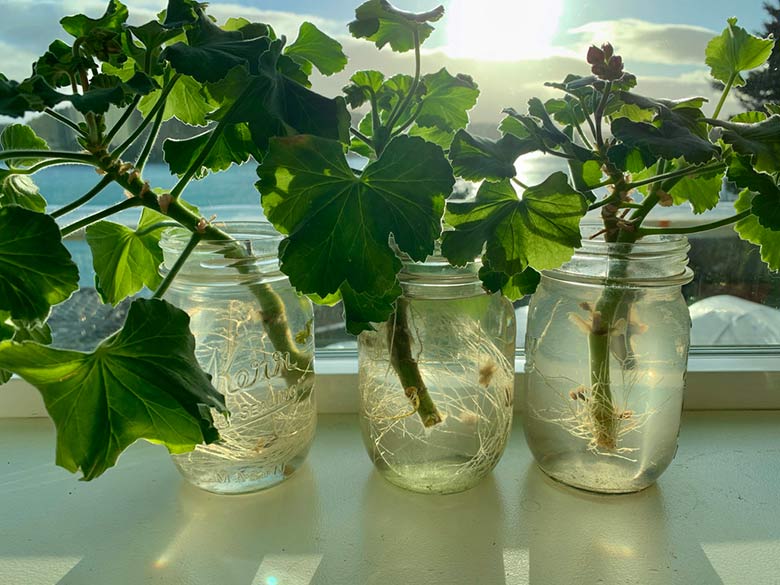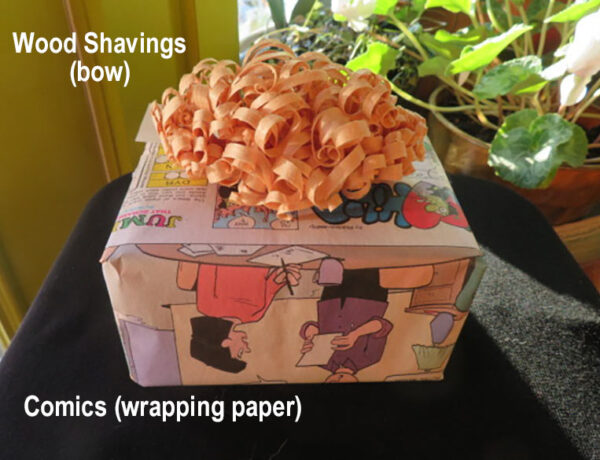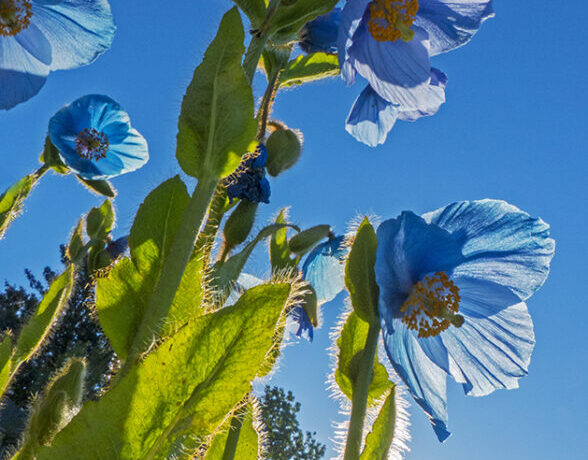Last week’s assault on our nation’s Capitol by an angry mob left me feeling shocked, ashamed, and sad. For a time I, like many people, was glued to their TV sets, radios, or devices. But before long I just couldn’t be around it anymore.
“I gotta get outside,” I mumbled.
Garden therapy can be so subtle…
I was greeted by rain-washed air and green grass. Slowly, deliberately I visited rhododendrons, pulled a few weeds, and checked in with the spinach seedlings, still vibrant and green in the mini-hoophouse since their sowing in September.
My concern began when I spotted newly-formed chartreuse buds on the tips of the honeyberry branches. While honeyberries are one of the earliest bloomers (April), setting fruit in May and June, it wasn’t a red flag.
I began to feel better as I poked along my trapline. Still, I saw too much green for a January day. I paused near the Montmorency cherry tree and glanced down. Yikes, a slug!
[Hi, Marion Owen here. This article you’re reading was originally published in the Kodiak Daily Mirror, the hometown newspaper for Kodiak, Alaska. You can access the archive page for my past columns, written each week since 1986].
Spruce branches covered a patch of perennials, protecting them against an Arctic winter that hadn’t arrived yet. Grabbing the base of a prickly branch, I lifted it, like the top of a cedar chest, for a peek inside.
Tight clumps of daisies and primroses huddled together under the protective cover. Where the branches DIDN’T cover the soil though was another story.
Crocus bulbs that I’d dutifully planted three inches deep into compost-rich soil in October, lay stranded on the surface like beached starfish waiting for the incoming tide. Everywhere, the soil was pock-marked with tiny craters, confirmation that we’d experienced heavy rains this winter.
A warm spell might be a good thing for someone wanting to hike in shirtsleeves, but it’s a bad thing if there is no protective snow on the ground and a deep freeze settles over Kodiak Island. You might recall the previous year’s spring freeze when intense cold zaps and blackens new buds and damaged large patches of salmonberries.
Warm visitations in January are not unusual. My brother, who lives in Spokane bemoaned the rain. “Somehow, we just lost our winter,” he texted this morning.
Unusual or not, a break in the cold offers a chance to get a few things done.
For one thing, it’s not too late to round up a few spruce branches and cover-up perennials or garlic cloves that you planted last fall. With scant snow on the horizon, I don’t want to risk my old stands of blue poppies or purple coneflower.
Chance favors the prepared mind
— French microbiologist, Louis Pasteur, the man who was instrumental in the development of the modern-day vaccine.
The current warm trend has unveiled what a friend calls, a “workable winter.” Backburner tasks that you’d normally put off until April or May, have conveniently become tasks-at-hand. For example:
Prune it
Warm weather means this is a good time to prune currants, blueberries, honeyberries, roses, fruit trees before the sap starts running. It’s a good time to also go after broken branches from wind-damaged trees.
Clean up the mess
Recent winds have deposited branches and limbs on lawns, curbs, and driveways. Sounds boring? Turn it into a yoga workout.
In the hoophouse or greenhouse: Be ready to sow cold-tolerant crops like lettuce, green onions, mustard greens, spinach, and arugula. No sow, no go. If it freezes, at least you tried.
Love your rhubarb
If you didn’t get around to mulching your rhubarb patch, get to the beach and gather up some seaweed. Mix with aged manure for gourmet results.
Weed, whenever you get the chance
Some greenery I noted during my de-stress rounds in the garden were last fall’s crop of weeds: Still alive and robustly green. Bundle up, don some gloves, grab a hand tool, a 5-gallon bucket, and head outside for some preventive weeding.
Out with the old
If you still have broccoli and kale plants in your raised beds, yank them out. Otherwise, root maggots are likely to infest next year’s crops. Oh sure, it’s nice to be able to eat off last year’s greens, but I’ve heard more than one tale of woe regarding root maggot and cabbage worm invasions. Now hear this:
Paying attention by maintaining a “clean” garden is the number one preventive measure.
Start a mini-indoor garden
Many herbs and vegetables, from basil to lettuce, are easy to grow under lights. In fact, the pandemic has seen a tremendous increase in hydroponic gardening.
Now is a good time to start a few geranium cuttings, and…
Ladies and gentlemen, start your SEEDS! If you grow your own seedlings, is your seed-starting setup ready to go? Do all your fluorescent or LED lights work properly? Do you need potting soil? Containers?
But first, TEST your seeds!
If you have old seeds or are curious about the quality of seeds that you grew and saved, take the time to do a simple germination test. Here’s how:
1. Moisten a paper towel.
2. Place a minimum of 10 seeds on one half of the damp paper towel and fold the other half over the seed.
3. Place the paper towel inside a plastic bag and partially close the bag.
4. Mark the bag with the date and the variety and number of seeds.
5. Keep the bag in a warm, dark place.
6. Check the seeds every day.
7. After several days, (this varies by type) seeds should be sprouting. If a seed molds, consider it dead and discard it. If it sprouts, count it as good and discard it. Keep a running tally.
8. After 10-14 days, count the total number of good seeds. To get the germination rate, divide the number of seeds by the number you started with and multiply by 100. If the germination rate is low, you can still go ahead and plant them. It just means you need to sow extra seeds.
If you find yourself feeling depressed about recent events, begin by acknowledging your feelings. Don’t ignore or deny them. They, work on healing. For that, may I suggest stepping outside? Go for a hike, saunter along the shoreline, walk the docks, or better yet, re-visit your neighborhood.
Oh, about that slug I mentioned earlier?
Just kidding.
~~ # + # ~~
I hope your week goes well. Be safe!

++++++++++++++++++
P.S. Slowly but surely I’m posting over 1,200 of my weekly gardening articles, which you can access here. And be sure to check out my report: “220 Things You Can Compost”. To contact me by email: marion (at) marionowenalaska.com.





No Comments